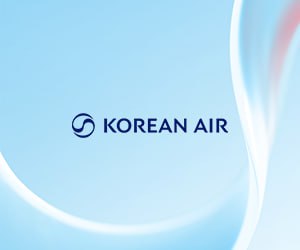
Cambodians take delight in the King’s coronation day fireworks on a solemn evening as global tourism stays glum. Yousos Apdoulrashim
Cambodia’s special tourist policy to revive the economic segment aims to attract investors to its ‘great tourism zone’ but can it finally solve long-drawn setbacks in time?
A special tourist policy draft has wafted to the surface which has got the business community talking. If everything goes according to plan, the policy will be implemented early next year.
The cleverly-worded policy, which was jointly drafted with the Ministry of Tourism aims to kill two birds with one stone – that is, to boost tourism and investment via the “great tourism zone”.
It has five key strategies that identify the special tourist market, how to organise new tourism habits, grow foreign and local investments in the zone, risk management, and the provision of incentives and rights to special tourists.
The policy looks at adding value to the sector by attracting various classes of tourists including long-stays, repeats, and high spenders.
Deemed the “special tourist”, this person comes with “resources”, a socio-economic mindset and goal to add value to Cambodia’s tourist destinations, particularly by investing in the great tourism zone.
“[The tourist] will be qualified as a client of the zone,” it read.
The zone is defined by a 2019 sub-decree as measuring no less than 100ha with accommodation, food and beverage outlets, parks, sports and healthcare centres, and other tourism-related facilities.
It is seen as an “appropriate” solution to resolve many challenges including the spread of Covid-19, and housing tourists under well-organised management.
Through the policy, the special tourist will play a pivotal role in attracting three categories of tourists – regular visitors, business travellers, and those visiting families.
On the surface, there might seem only a smidge of difference relating to visa specifications but a deeper look at the wordings shows a likelihood of policy relaxation on property ownership and business procedure. For example, the draft places emphasis on attracting the special tourist due to competition in the region. Therefore, it is pertinent to grant them special rights, and facilitate visa, transportation, accommodation, business, and investment within the targeted tourism destinations. It would seem that this privilege is only bestowed to investors in the great tourism zone.
When asked what this meant, Ministry of Tourism (MoT) spokesman Top Sopheak said: “We want to push this policy to make it more comfortable for tourists to do business or buy land. Currently, foreigners can only buy property from the first floor up.
“We are working on a resolution to ease [this] and business procedures.” He did not elaborate despite several requests to do so.
Purchase, rent and sell
For years, a high influx of foreign nationals had been recorded by the Cambodian immigration as investors and employees in the sprawling real estate and hospitality sector.
Hence, the reason why travel agent Cheav Ly Heng, whose decade-old firm caters mostly to Chinese tourists, felt it might be similar to the current arrangement where foreign nationals such as Chinese, Japanese and South Koreans come to stay and invest.
When it comes to visa applications, the draft states that the special tourist would be entitled to a multiple entry visa, visa exemption or right to long stay.
On property entitlement, the special tourist has the right to possession or enjoyment of a co-owned building or residence, as in a second home in the zone, and transfer of ownership.
Similarly, they can purchase, rent, sell or do business on their real estate within the zone.
Before Covid-19, Northeast Asian nationals were able to acquire a one to three-year visa on arrival with multiple entries, for a fee of between $50 and $100.
“They come here to work and invest in the country but can only stay for 30 days each time they enter but due to the pandemic, the government stopped issuing visas on arrival. Now, visitors have to first apply for long-term visas in their own country,” said Ly Heng.
With the new policy, he thinks the visa could cost more although this detail is not publicly known as yet.
Going by a similar policy introduced by Thailand in October, indications are that visa fees have surged in the neighbouring State.
Quoting a Thai visa agent, Nikkei Asia wrote that special tourists might have to fork out at least 150,000 baht, which is a 15-fold increase from around 10,000 baht before the pandemic.
Having said that, Thailand continues to attract Chinese visitors – a trait shared by Cambodia that experienced unending arrivals of Chinese nationals during the Covid-19 crisis.
Of course, this is also reflective of China’s major investments in Cambodia of up to 40 per cent in 2019, making it the largest foreign investor.
In the first nine months of this year, nearly a third or 302,826 visitors of the diminished tourist numbers were Chinese.
Of that, Chinese business travellers weighed slightly more than holidaymakers, which brings to light the question whether the special tourist plan would harness the existing Chinese market.
“The Chinese are a huge market. They travel the world. We will first [capitalise] high-class tourists and other countries [such as] Japan, Korea and neighbouring countries,” said Sopheak.
Challenges to the fore
Like everywhere else, the travel sector in Cambodia has been stark. The number of foreign arrivals plunged 74 per cent to 1.2 million between January and September this year from 4.8 million in the same period in 2019.
Last year, the government envisioned total arrivals to grow to 7.5 million in 2020 from 6.6 million. The erasure in arrivals translates to an estimated $5 billion wipeout in tourism revenue. At the same time, some one million people including those indirectly affected experienced the brunt of the effect as some 3,000 tourism-related establishments closed down or were suspended.

Source: Tourism Statistics Department, MOT.
So, the special tourist policy is a silver lining. First, it has to iron out the quirks. It is also where the challenge lies.
Industry players foresee that a failure to reach a consensus could result in the well-drawn up document ending its days in a dusty cupboard.
For now, discussions within the ministry are complete. “The next step is to open the dialogue to relevant ministries and industries to improve the draft. So, we are far from finished,” Sopheak told The Post.
That being said, there is much to be done in less than two months to 2021.
Within the great tourism zone, it has to tackle inter-sector challenges, limitations of the health system and infrastructure, high electricity tariffs and interest rates of development loans, land matters, and lack of technical skills.
“[These] must be taken care of, to meet the zone’s requirement,” the document read.
In the past, the alleged setback with the implementation of Cambodia’s policies has been the lack of inter-ministerial coordination, will and expertise.
Cambodia Chamber of Commerce vice president Lim Heng agreed that people were concerned about the problem but quickly defended the policy as being better than what was commonly believed.
He said the issue on the lack of coordination among ministries can be raised by Luu Meng, the co-chair of the private sector working group on tourism, with Tourism Minister Thong Korn, who is the other chairman.
“If the tourism sector has a problem, it can bring it up with Luu Meng, whether it is about the EU crisis, [business] fees and under table fees. I think we can solve this problem,” he said.
However, local entrepreneur and public-private partnership concept advocate David Van, while commending the private sector for “working hard” with the ministry to draw up the policy, said putting up a well-written policy is the easiest part compared to implementation.
“It must come with adequate policy measures that facilitate the process, including a cohesive integrated approach through all relevant ministries,” he advised, pointing out that the reality of a pre-Covid mass tourism rebound is only likely to happen around 2023 to 2025.
Similarly, structural challenges including limited digital connectivity and lack of packaged tourism service providers, which are well-known, can be stumbling blocks to any effort to upgrade and develop Cambodian tourism away from the existing main attractions.
“These problems must be addressed under a complete government approach,” said economist Dr Chheng Kimlong.
Nonetheless, he found that progress is being made on private land rights and high bank loan interests although they remain an issue.
Spread out the zone
In 2019, tourism accounted for 21 per cent of gross domestic product – a contribution that has been rising, although The World Bank said a recent slowdown in the sector’s growth pointed to a need to diversify.
In the July report Enabling ecotourism development in Cambodia, the staff of The World Bank found that Angkor Wat visitor numbers had declined by 10 per cent over the past three years.

Source: Tourism Statistics Department, MOT
The dipping trend of visitors from key markets such as South Korea and Japan equally impacted overall tourist figures and expenditure.
“Average daily spending of tourists has declined by about 18 per cent which industry experts noted is due to low tourism destination and product diversification,” the report said.
It has been a contention for a while now, which is why The World Bank proposed that Cambodia invest in ecotourism development while helping nurse the sector back to recovery after Covid-19.
While the government has previously acknowledged the need to diversify, the special tourist policy’s great tourism zone is expected to fix the diversification bit by introducing new tourism products.
“[It is] a great initiative,” Thourn Sinan, chairman of the Cambodian chapter of the Pacific Asia Travel Association enthused.
Nevertheless, he suggested that the products should not only be in the great tourism zone, seeing that domestic tourism has grown despite Covid-19.

Source: Tourism Statistics Department, MOT.
His assertion was supported by recent data showing 645,000 people, mostly locals, taking advantage of the Water Festival holidays to visit other provinces and sites.
Hence the reason why the zone should be spread out in Cambodia as it helps to grow the rural economy which will directly benefit the people, Sinan said.
Travel bubble, 2021
In the meantime, travel bubble arrangements with Southeast Asia are pending on the back of a ministerial committee meeting expected late November.
The meeting will be led by the Ministry of Health, following which the travel bubble draft will be submitted for approval.
“We aim to implement it by the first quarter of 2021,” Sopheak said. In any case, he contends that it is only a short-term measure, unlike the special tourist policy which is being built to last.
But the government has to first overcome a string of structural problems. Can it?
“It should not be a problem. If we have a problem, we will find a solution,” Sopheak stressed.














